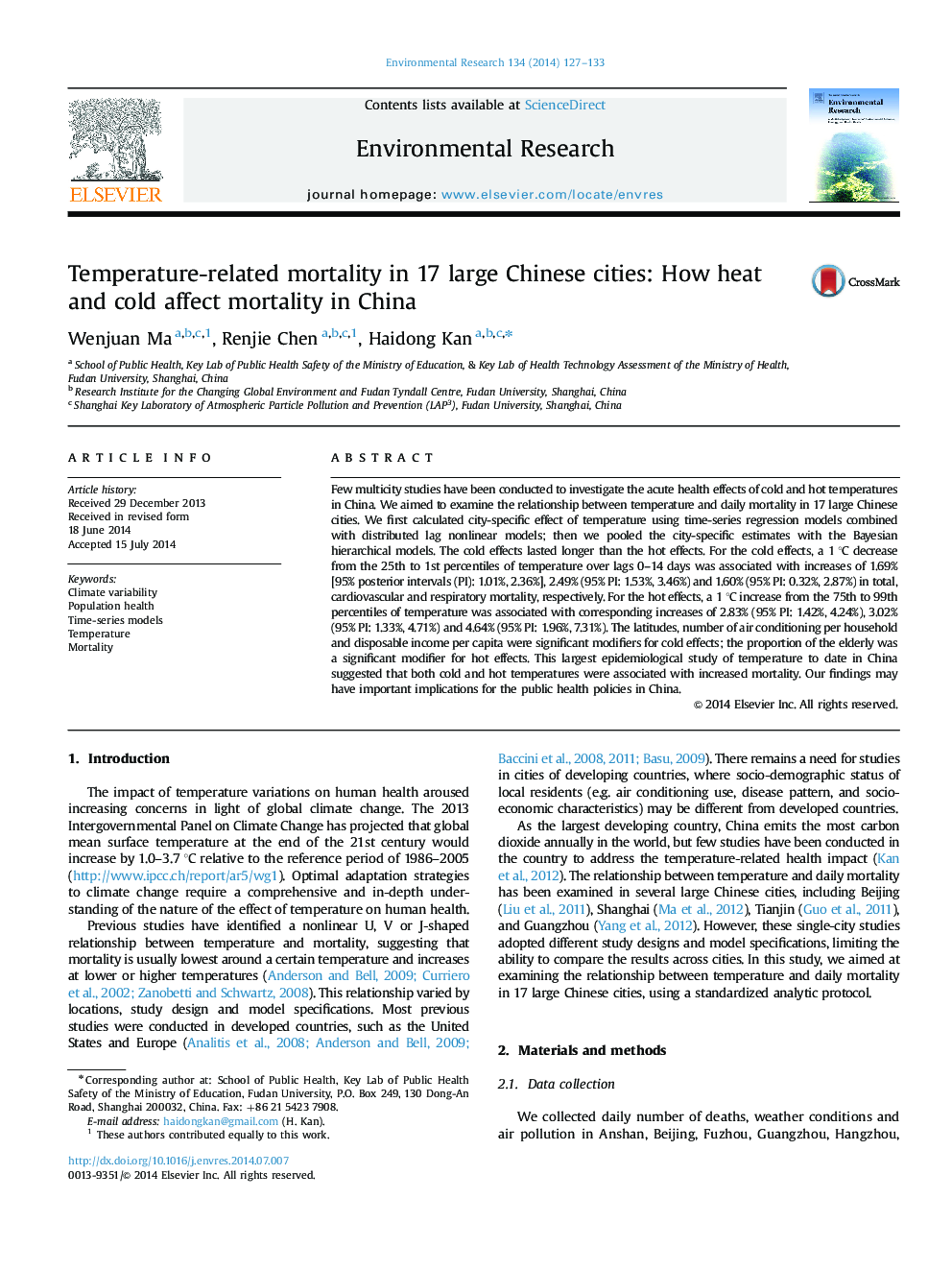| کد مقاله | کد نشریه | سال انتشار | مقاله انگلیسی | نسخه تمام متن |
|---|---|---|---|---|
| 6352466 | 1622567 | 2014 | 7 صفحه PDF | دانلود رایگان |
عنوان انگلیسی مقاله ISI
Temperature-related mortality in 17 large Chinese cities: How heat and cold affect mortality in China
ترجمه فارسی عنوان
مرگ و میر مربوط به دما در 17 شهر بزرگ چین: چگونگی گرما و سرما در مرگ و میر در چین تاثیر می گذارد
دانلود مقاله + سفارش ترجمه
دانلود مقاله ISI انگلیسی
رایگان برای ایرانیان
کلمات کلیدی
تغییرات اقلیمی، سلامت جمعیت، مدلهای سری زمانی، درجه حرارت، مرگ و میر
موضوعات مرتبط
علوم زیستی و بیوفناوری
علوم محیط زیست
بهداشت، سم شناسی و جهش زایی
چکیده انگلیسی
Few multicity studies have been conducted to investigate the acute health effects of cold and hot temperatures in China. We aimed to examine the relationship between temperature and daily mortality in 17 large Chinese cities. We first calculated city-specific effect of temperature using time-series regression models combined with distributed lag nonlinear models; then we pooled the city-specific estimates with the Bayesian hierarchical models. The cold effects lasted longer than the hot effects. For the cold effects, a 1 °C decrease from the 25th to 1st percentiles of temperature over lags 0-14 days was associated with increases of 1.69% [95% posterior intervals (PI): 1.01%, 2.36%], 2.49% (95% PI: 1.53%, 3.46%) and 1.60% (95% PI: 0.32%, 2.87%) in total, cardiovascular and respiratory mortality, respectively. For the hot effects, a 1 °C increase from the 75th to 99th percentiles of temperature was associated with corresponding increases of 2.83% (95% PI: 1.42%, 4.24%), 3.02% (95% PI: 1.33%, 4.71%) and 4.64% (95% PI: 1.96%, 7.31%). The latitudes, number of air conditioning per household and disposable income per capita were significant modifiers for cold effects; the proportion of the elderly was a significant modifier for hot effects. This largest epidemiological study of temperature to date in China suggested that both cold and hot temperatures were associated with increased mortality. Our findings may have important implications for the public health policies in China.
ناشر
Database: Elsevier - ScienceDirect (ساینس دایرکت)
Journal: Environmental Research - Volume 134, October 2014, Pages 127-133
Journal: Environmental Research - Volume 134, October 2014, Pages 127-133
نویسندگان
Wenjuan Ma, Renjie Chen, Haidong Kan,
